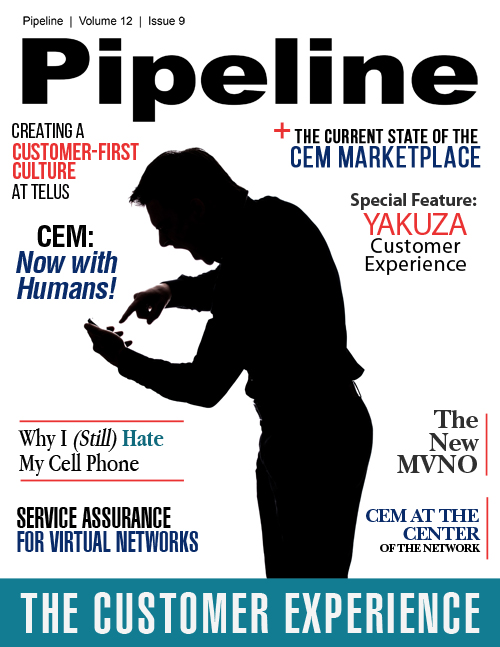Creating a Customer-first Culture at Telus
By: Chris Piedmonte

What is a customer-first culture and how do you recognize one?
You know a customer-first culture when you encounter one as an employee or as a customer. You might not be able to name it, but you know when an organization is really committed to all customers: existing, new and even those not quite convinced.
Employees and customers are equally treated with respect, well-supported and know they are important to the organization. Customers experience good value for their time, effort and money and are more than willing to promote the brand of the company that serves them.
In short, people speak well of and trust the company and act on that trust by continuing to buy from them. A win-win-win if there ever was one.
Trust is a integral component of customer-first cultures, without which a sense of belonging and customer loyalty would be difficult to achieve in business relationships. In an age where trust is perilously low between corporations and customers for a variety of reasons, organizations that do what they say they will do stand out. And to do that well, consistently and pervasively, companies need to be wired that way. That’s culture.
According to Carol Borghesi, a respected telecommunications industry veteran, an expert in customer experience management, and one of the executive leads behind Telus' customer-first initiative; “The only arbiters of customer satisfaction are, well customers.” She acknowledges the popularity of the likelihood to recommend (your service provider to friends and relatives) metric as the ultimate goal, but is quick to point out that it is devilishly difficult to operationalize positive changes based on one so-called “killer question." The real insights are found in the elements that lead to (or quash) a recommendation and that’s where most organizations have work to do.
In a recent interview with Carol, she stated, “We need to re-frame how we think about this topic [of customer-first culture]. My three decades' experience in this industry has taught me that a customer-first strategy cannot be developed separately from the overall strategy of the business.” She believes that many companies fail to achieve a sustainable customer-first culture because the job is delegated to only part of the organization, typically sales, marketing or customer service. To be successful in developing a customer-first culture she states the entire organization needs to be aligned around the goal of putting the customer first.
Customer-first Culture is a Team Sport
“Culture is the rocket fuel of strategic thinking, just as the business model is the vehicle for it. It’s not something you can speed-date to success,” according to Borghesi. She strongly believes that a “team-based” approach to developing a customer-first culture is essential. This approach must involve all aspects of the business from the head office to the frontline operations to be successful.





















